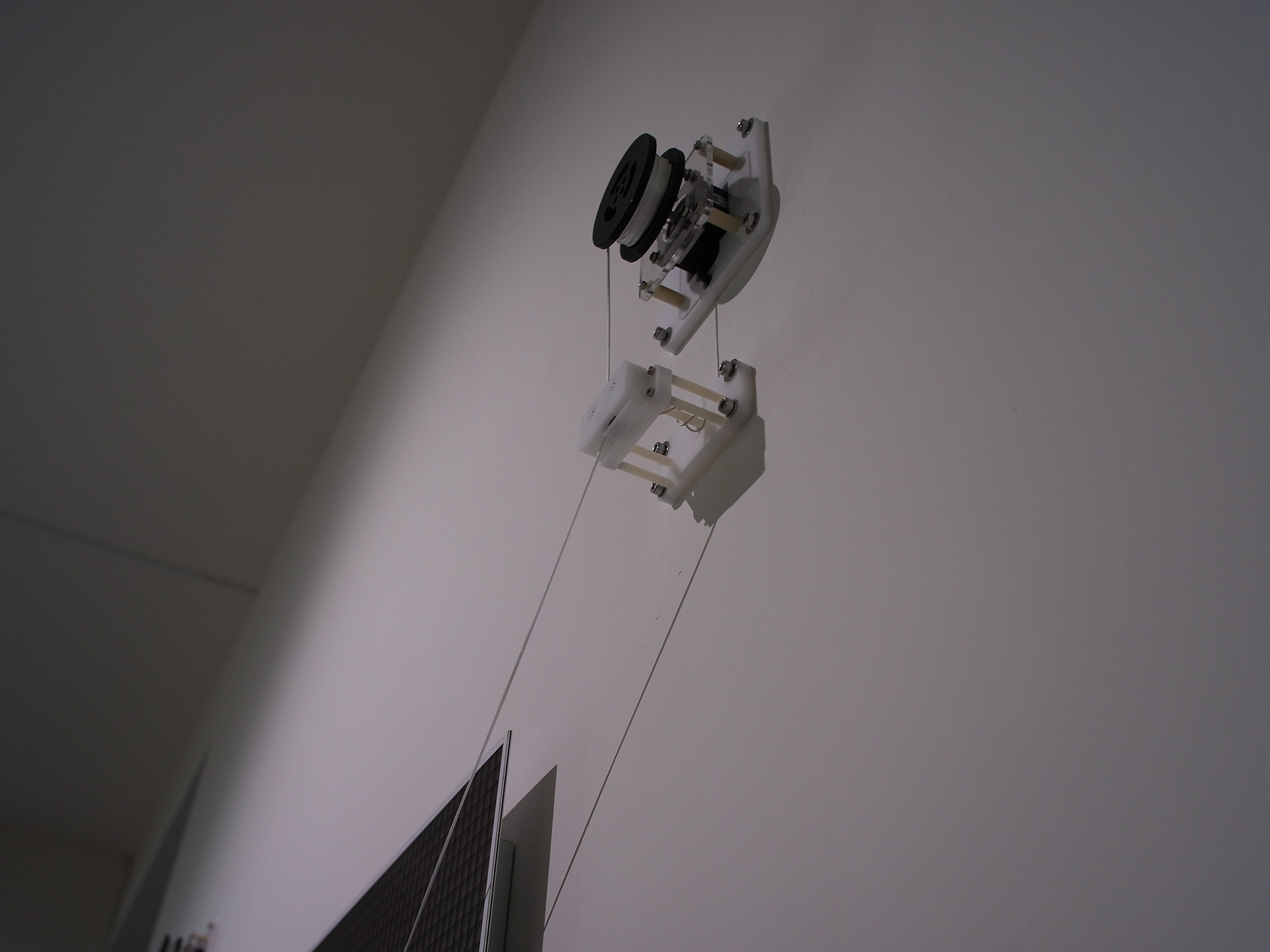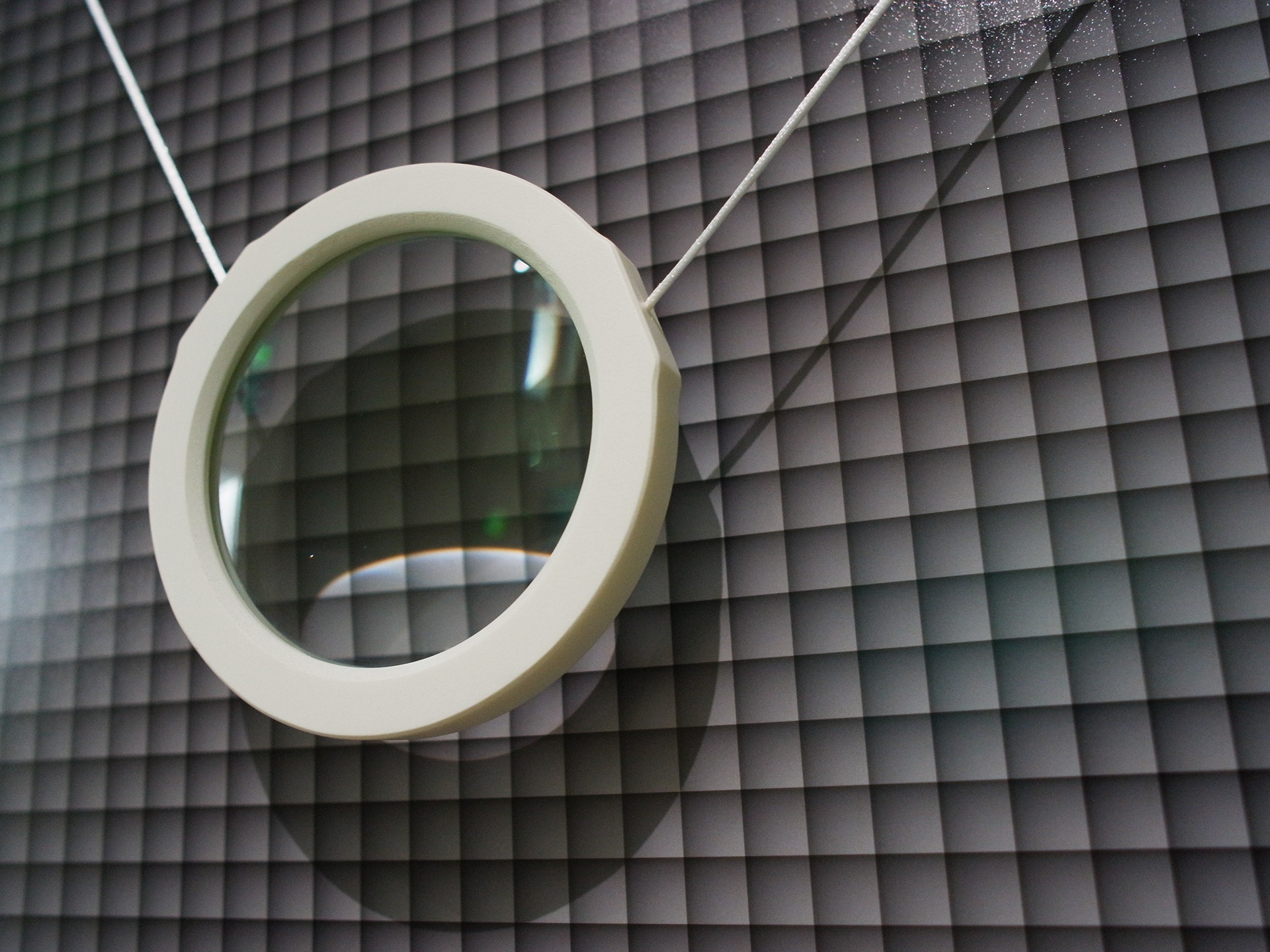複合媒材, 數位微噴、機械裝置、電子元件 200x200公分 2019
Mixed media, Giclee print, mechanic devices, electronic components 200x200 cm 2019


〈通靈板Ouija Board〉Ouija由法語 “oui” 與德語 “ja” 兩個字根組成,它們的字意都等同於英文的 “yes”。
在網路連線的情境中,當人類欲與伺服器連線時,首先要透過裝置提出請求SYN,伺服器接收後向裝置回應ACK(yes),裝置必需再次回應 ACK(yes),人機之間的「交互界面」才得以成立。
作品用全部網路IP的資料感光,將IPv4的四位數字轉換為四格8bit灰階,並拍下了網路各個節點。以此,劉家銘用電腦程式生產了一張全新層次人機共感的“通靈板”。
The word Ouija is composed of the French word oui and the German word ja, both of which mean “yes.”
In computer networks, when humans want to connect to a server, they must first send it a “SYN” request from their device. After receiving it, the server responds with an “ACK (yes),” and the device must respond with an “ACK (yes)” again. Thus, an interactive interface between the two is established.
This artwork uses the Internet Protocol (IP), by which all networks sense data, converting four-place IPv4 numbers into four panels of 8-bit grayscale image, then visually capturing the various nodes of the network. In this way, Lawrence Liu has used a computer program to produce a "Ouija Board" with a new level of human-machine empathy.
Credits
Software control 彭菘瑋
Mechanical design 蔡長龍、吳昕恩
3D printing support 李松錡